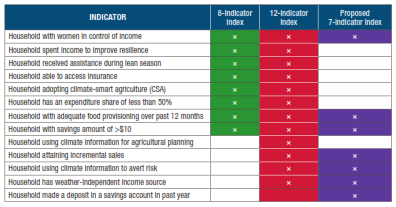Lessons for measuring resilience from the BRACC programme
Whilst there is increasing recognition that we need to build resilience in the face of climate change, there is less consensus on what resilience is and how we track progress towards it. The growing interest in resilience has been accompanied by the emergence of varying approaches to measuring progress.
The BRACC programme experimented with different configurations of a resilience index as part of its reporting obligations to the UK’s International Climate Finance (ICF) commitment. Composite indices, together with thresholds that lacked a clear meaning, led to difficulties interpreting the resilience index outcomes. In addition to challenges with interpretation of the resilience index results, BRACC faced additional challenges with resilience measurement, including developing a sufficiently nuanced theory of change for a highly complex programme, a short timeline, use of some indicators that were not sensitive to intervention impact, and some evaluation approaches that were difficult to adapt to match adaptations in implementation.

Before attempting to measure resilience, the relationship between welfare outcomes/development and resilience needs to be unpacked, because improvements in the former do not automatically reflect or translate into improvements in the
latter. This observation is critical given the evolving nature of climate hazards and risks, which means that resilience in the face of current exposure to shocks may not be adequate in the face of future change.
These findings have implications for the implementation of the National Resilience Strategy in Malawi, which will require tracking of progress. The National Resilience Strategy monitoring and evaluation framework should:
- leave space to customise resilience measurement frameworks that specifically relate to programme theories of change with respect to the resilience: of what, to what shock or hazard, and for whom
- differentiate between general welfare outcomes (which may be short-term priorities) and targeted, hazard-specific resilience outcomes (which may be long-term priorities)
- select impact evaluation approaches carefully to balance the need for rigour, flexibility and cost-effectiveness
- use simple, transparent approaches, while focusing on a few high-quality, well understood indicators
- avoid resilience index thresholds, unless there is a specific rationale or meaning for the threshold
- consider the need for data collection and research to provide the empirical basis for resilience measurement, and do this at appropriate scale based on needs and resources.
